What are Plant Growth Regulators and Why the Sudden Increase in Interest?
Plant growth regulators are sprayed on plants to modify their growth and development. In western Canadian cereal crops they can reduce plant height and increase stem thickness, which helps reduce lodging.
While plant growth regulators are relatively new to western Canadian cereal growers, they have been widely used in other parts of the world for many years. In Europe, 73% of the cereal acres were treated with a growth regulator, and 37% were treated more than once. Source
The recent increased interest in plant growth regulators can be attributed to the United States establishing an MRL (maximum residue limit) for chlormequat chloride, the active ingredient in MANIPULATOR Plant Growth Regulator. Previously, growers were cautioned about using PGR because of the potential market risk. As Cam Dahl, President of Cereals Canada stated “This is a potentially valuable tool that has seen limited use in Canada because of the lack of approval in the U.S. and the market risk that this entailed. That barrier to use has been removed.”
How do Plant Growth Regulators Work in Cereals and What are the Benefits?
There are two main types of plant growth regulators. Ethylene releasing compounds add the hormone ethylene to the plant when sprayed on the crop, which reduces height and thickens the stem. In cereals the window to spray is very narrow, sometimes only a few days, and spraying outside of this window can cause crop damage. Some growers are very experienced in using this product, but new users may be scared away by the restrictive window.
Anti-gibberellin products, like Manipulator from Engage Agro which contains chlormequat chloride, reduce gibberellin production which in turn reduces plant height and thickens the plant stem.
PGR’s are sprayed on the crop the same way as pesticides. Manipulator can be sprayed at lower temperatures (down to 1C), through a wide window of application (2-3 leaf through flag leaf stage) and has excellent tank mix compatibility.
Engage Agro has a lot of information on their website about the optimal timing for spraying Manipulator. They explain that the best results are seen when Manipulator is sprayed at the 5-6 leaf stage, followed by very good results if sprayed at the flag leaf stage. They also provide info on how to avoid a separate pass by tank mixing Manipulator with a flag leaf fungicide application.
This graph from Engage Agro shows the effect of spraying Manipulator at different timing.
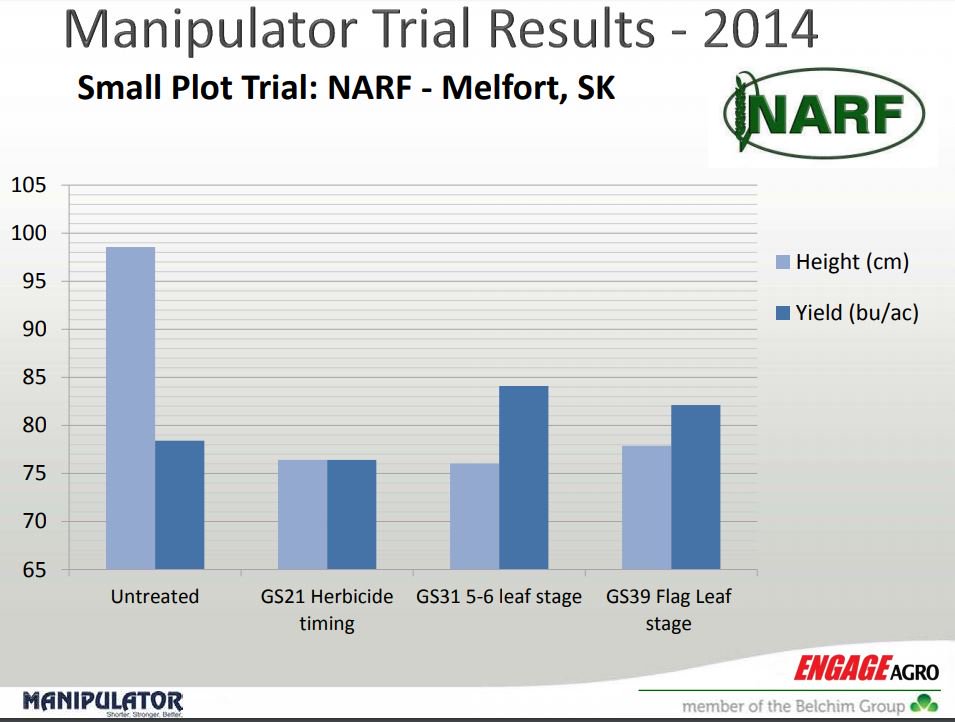
More information on Manipulator can be found on Engage Agro’s website.
What Cereal Varieties are Best Suited for Plant Growth Regulators?
According to information from the Alberta Agriculture and Forestry, PGR performance depends on crop species and cultivar, and some PGRs work better on some crop species than others. For Manipulator, wheat is the most responsive, followed by barley and least of all oats. At this time there is only an MRL for spring wheat, winter wheat and durum wheat in Canada.
Not all wheat varieties respond the same to PGR application. In our trials this summer CANTERRA SEEDS has seen an initial height reduction with Manipulator on Glenn and AAC Cameron VB. These photos were taken on July 6th, 2018, 61 days after planting.
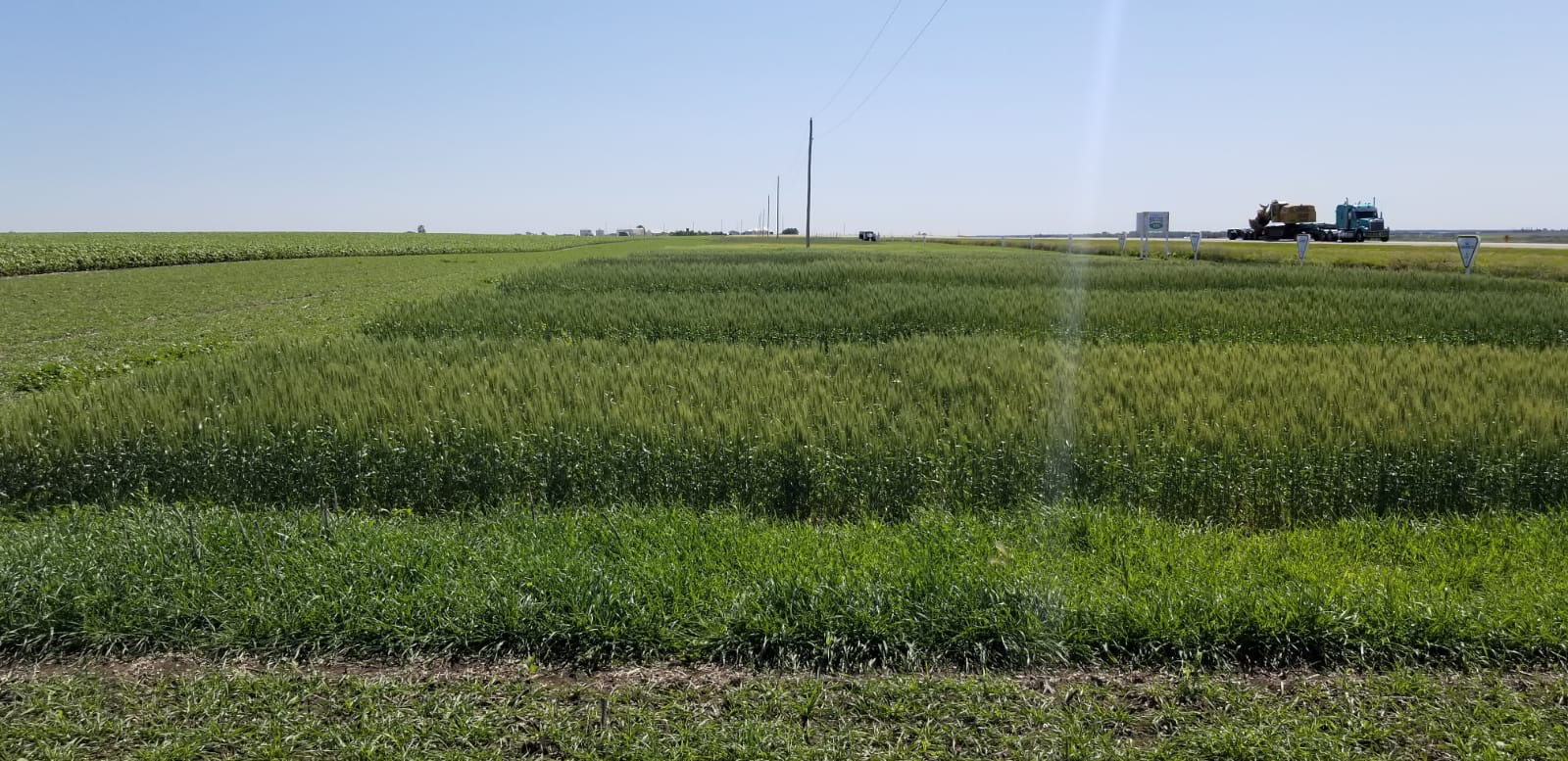
Glenn is the second variety from the front and AAC Cameron VB is directly behind it. The other varieties are experimental wheat lines from LCRC.
On the durum wheat in our Elton, MB site, the greater effects of the PGR (at far right of photo) are seen on AAC Congress than CDC Creedence.
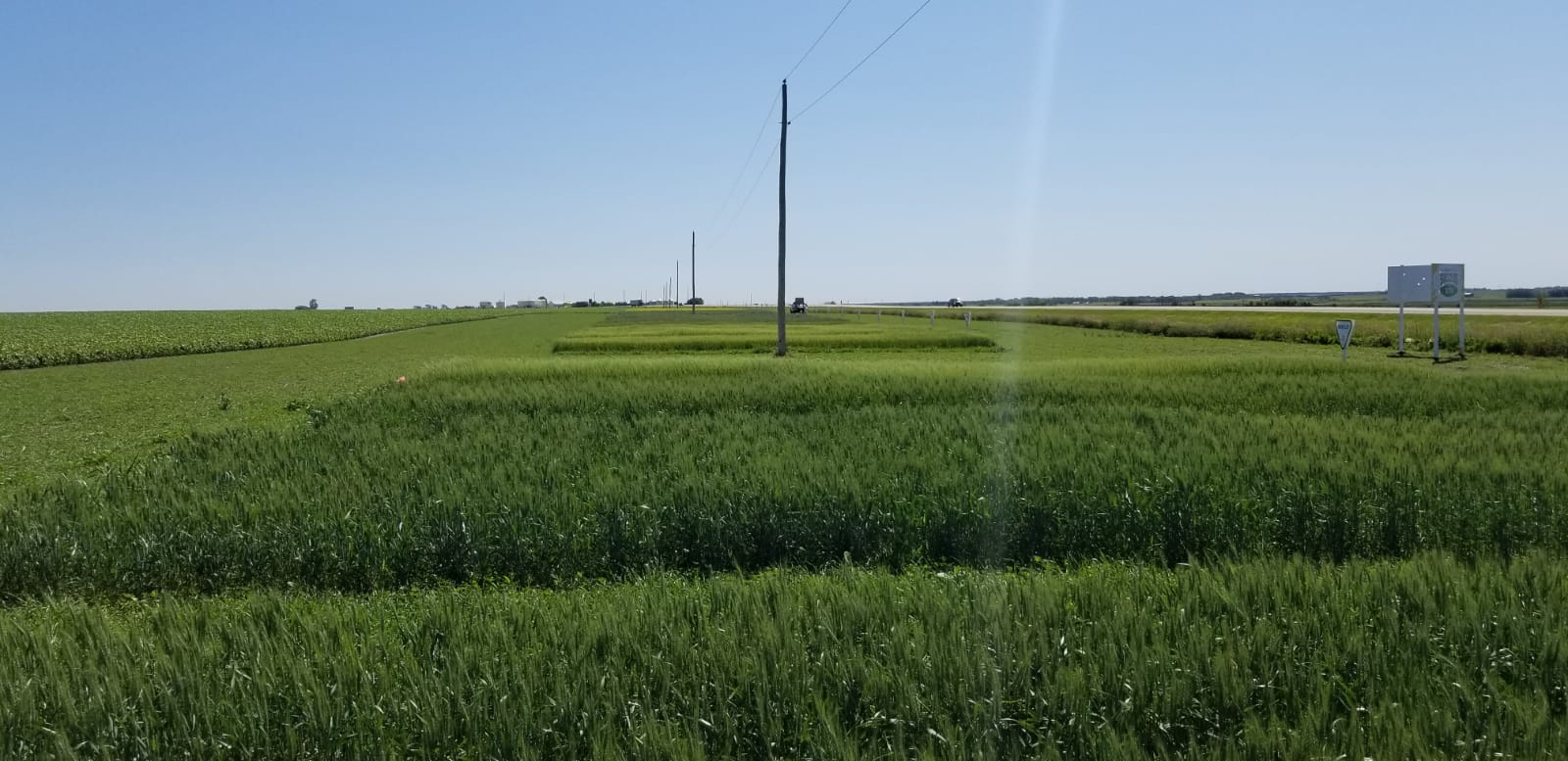
AAC Congress in the first variety from the bottom, followed by CDC Credence behind it.
This photo was taken on AAC Cameron VB plants pulled from a trial at Indian Head. The plant difference is very clear.
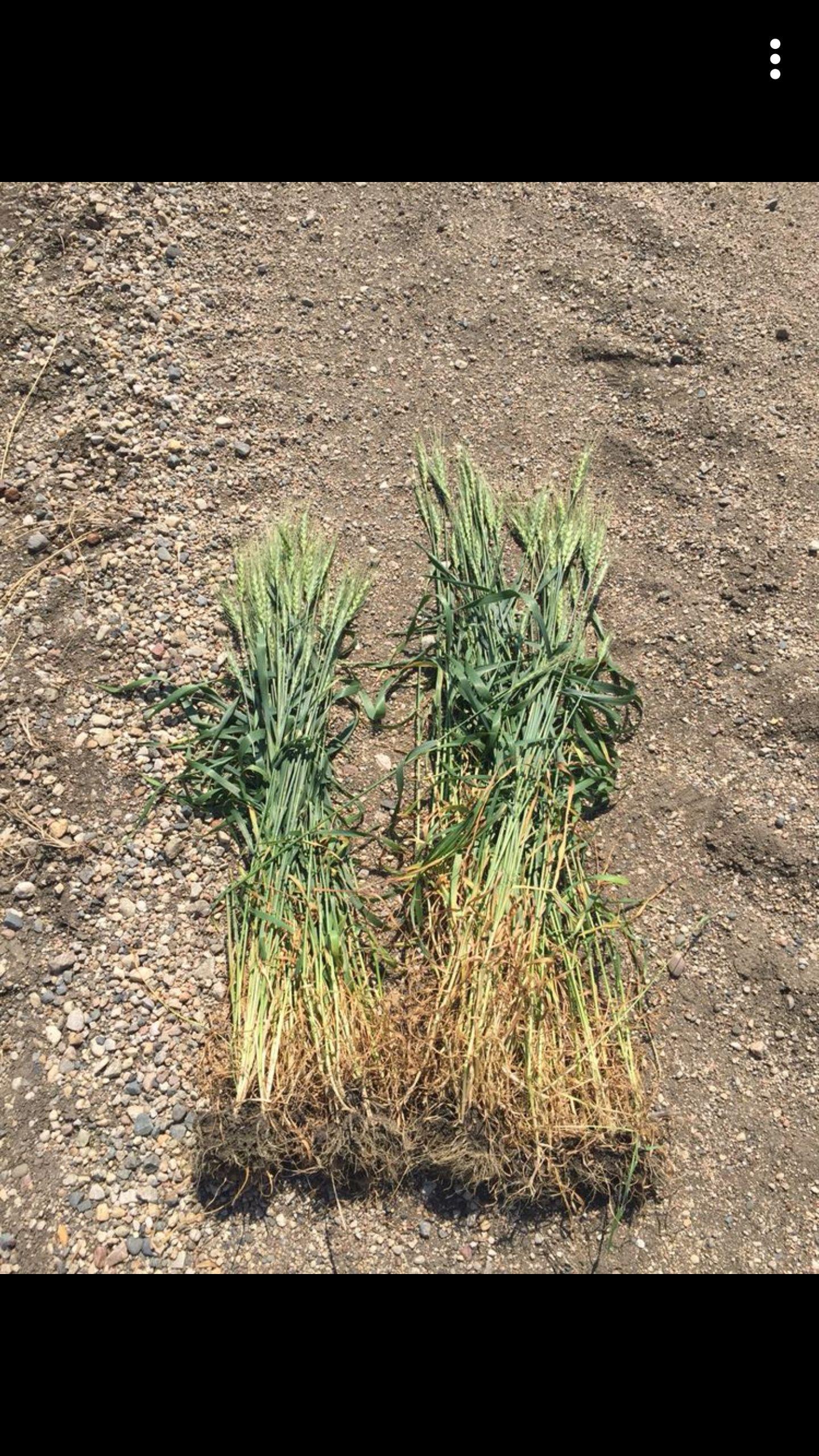
Engage Agro also has a handy app Click for iTunes where trials results by variety, in addition to a lot of other information, can be found. This graph shows the response in AAC Cameron VB.
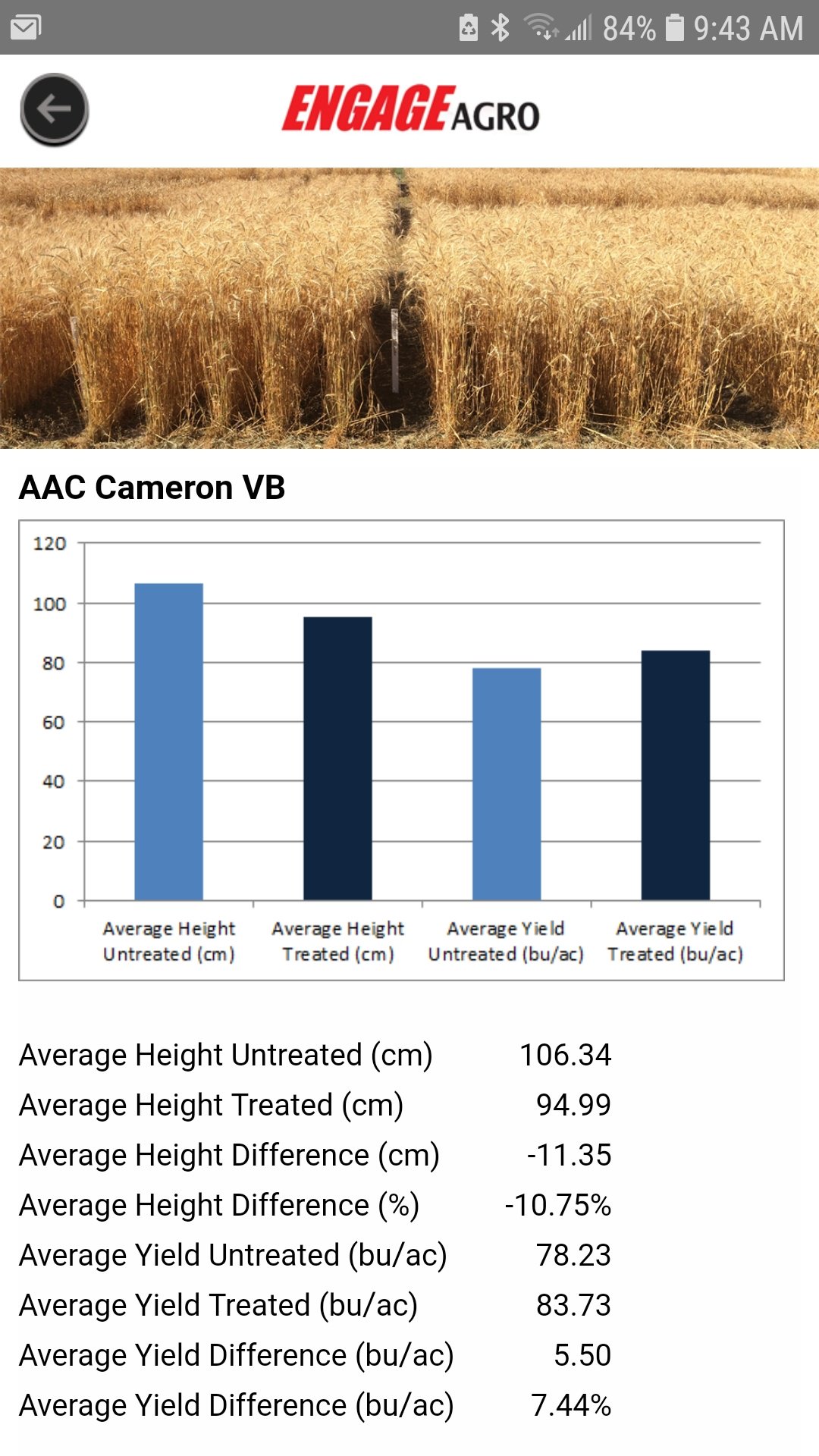
Is it Worth it to Spray a Plant Growth Regulator on Your Wheat?
The question on whether or not to spray a PGR on your wheat will come down to the cost per acre, and the added benefit you expect to receive. If you are growing a variety that is prone to lodging, and in an area with high levels of moisture and fertility, and have a high expected yield potential, the cost per acre (approximately $15/acre*) may be easily justified. Lodging can rob your crop of yield, create uneven maturity, loss of quality and cause problems at harvest.
PGR use will likely increase in popularity in Western Canada in the coming years as more research is done, new products are registered, and growers start to measure the cost/benefit on their own farm.
Still looking for more information on Plant Growth Regulators? This video from the Alberta Wheat Commission provides a great overview.
*Check with your local retailer for pricing


